Julia Kelly's Blog
October 3, 2023
A Traitor in Whitehall is out now!
At long last, the first book in my brand-new mystery series A Traitor in Whitehall is now out in bookstores and online!

In it you’ll meet my amateur sleuth Evelyne Redfern, a detective fiction obsessed girl about town with a notorious family past. When she’s recruited by a family friend to be his eyes and ears in the typing pool of Prime Minister Winston Churchill’s cabinet war rooms, she’s not entirely sure what she’s meant to be looking for. That is until she stumbles across a dead body, a murder investigation, and a race against time to uncover a dangerous mole.
This book was truly many years in the making, and I’m thrilled to be sharing it with you now!
A Traitor in Whitehall
is available to buy at all major retailers.
April 18, 2023
What I’m Planning to Read This Spring and Summer
Before I was a writer, I was a reader. And being a reader, I love recommendations.
Whenever things become busy, I always find that I struggle to read for fun. That’s why I’m excited that things are starting to calm down after The Lost English Girl’s big release in March because there are so many books coming out this spring and summer! Here are a few titles I have my eye on:






If you want more book recommendations, go ahead and follow me on Goodreads where I always share my current reads!
April 11, 2023
The music of The Lost English Girl
I love music, but as a rule I’m not an author who needs music to write. However, when I decided that Joshua, the male protagonist of my book The Lost English Girl, was going to be a Jazz musician, I knew that I had a great chance to feature some fantastic songs in the book.
Here’s a playlist with every song name-checked in The Lost English Girl:
There are some anachronisms here when it comes to which recording I chose. Some are sentimental favorites—my love of Jazz comes from my dad—some are due to the limitations of what was available to link on Spotify. However, all are great, and I hope you enjoy listening to them—perhaps as you read along to The Lost English Girl!
If you haven’t read The Lost English Girl yet, you can purchase your copy from all fine book retailers including:
Amazon | Bookshop | Barnes & Noble Kobo | Apple Books | Google Play | Audible | Libro.FMIf you have read the book, please consider reviewing the book on Goodreads or your favorite retailer.
April 6, 2023
What to Read After You’ve Read The Lost English Girl
One of the questions I often get from readers is, “Where can I learn more about the topics you write about?”
(All of the following books mentioned are linked in a carousel below.)
In my Author’s Note for The Lost English Girl, I mentioned When the Children Came Home by Juliet Summers, which weaves firsthand accounts of children and parents separated by Operation Pied Piper (the mass evacuation of children and other vulnerable people from urban areas of Britain deemed at high-risk of bombings if a war broke out). The book is incredible, with lots of detail about how varied people’s experiences could be during evacuation as well as upon their homecoming.
I also leaned heavily on Patrick Bishop’s Air Force Blue: The RAF in World War 2 while writing Joshua’s storylines. The book is very readable and fascinating if you have any interest in the Royal Air Force.
While the Author’s Note is always a good place to look for books, there are often too many books to choose from when it comes to resources. Here are some other places you might turn if you want to read more about life in Liverpool, the Operation Pied Piper evacuations, or more:
Goodbye East End: An Evacuee’s Story by David Merron
Women in the Second World War by Neil R. Storey & Molly Housego
Liverpool’s Children in the Second World War by Pamela Russell
A 1940s Childhood: From Bomb Sites to Children’s Hour by James Marsh
Evacuee: From the Liverpool Blitz to Wales by Barbara Warlow Davies
Wartime Childhood by Mike Brown

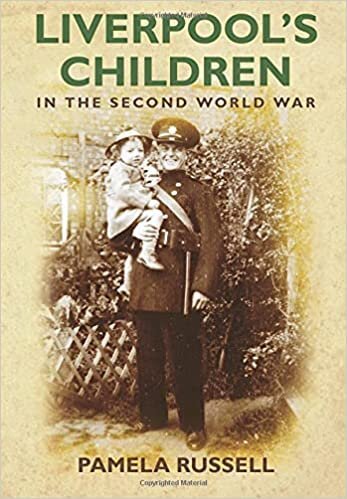


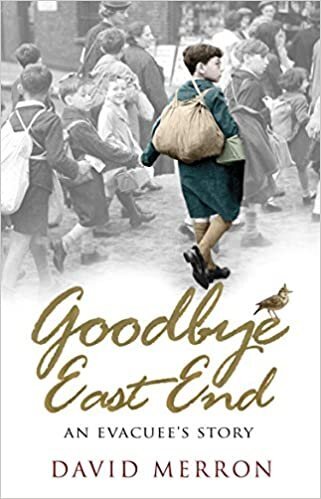
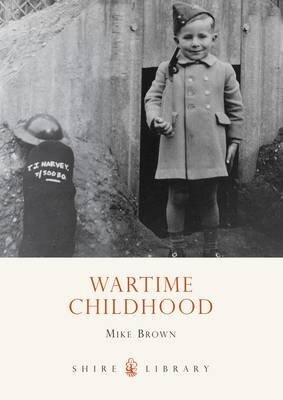
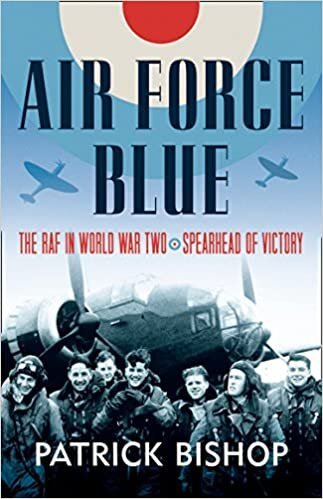
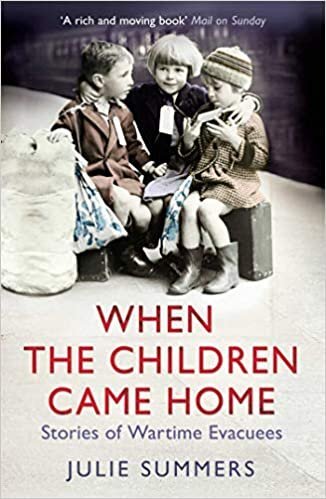
And finally, if you want more fictionalized accounts of Operation Pied Piper and the stories of evacuated children during the war, you’re in luck because two incredibly talented historical fiction authors have books on the subject coming out soon! The Secret Book of Flora Lea by Patti Callahan Henry comes out May 2, 2023 in the United States and The Last Lifeboat by Hazel Gaynor comes out June 13, 2023. (Both are US release dates.)
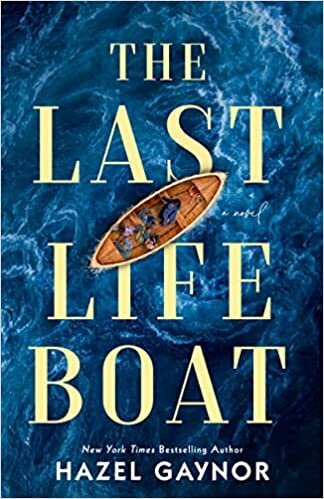
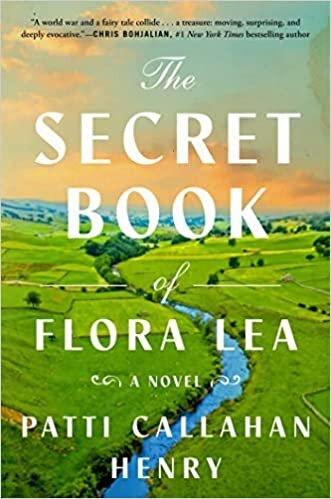
If you haven’t read The Lost English Girl yet, you can purchase your copy from all fine book retailers including:
Amazon | Bookshop | Barnes & Noble Kobo | Apple Books | Google Play | Audible | Libro.FMIf you have read the book, please consider reviewing the book on Goodreads or your favorite retailer.
Happy reading!
March 21, 2023
The Joy—and Challenge—of Writing a Novel Inspired by Family Stories
There’s an old adage that writers enjoy pulling out from time to time: “Be nice to me or you’ll end up in my novel.”
Although I’ve never been one to torment my enemies—not that I have any—in the pages of my books, I have from time to time dipped into family lore for inspiration. And never has this been more evident with my recent novel The Lost English Girl.
The seed for the novel, which starts in 1934 and stretches until 1945, came from an old family story. The tale goes that my mother’s aunt fell pregnant out of wedlock. That alone would have raised eyebrows in their Catholic, working-class Liverpudlian community, but the story was even more complicated because the father of her unborn child was not Catholic. He was Jewish.
The young couple was either strongly encouraged or—more likely—forced by their families to marry in order to legitimize the coming child. However, instead of living as a family, the couple was separated on their wedding day because they were of different faiths. Legend goes that my mother’s aunt raised the child—a boy—at home with her mother. She never saw her husband again.
How did my mother’s aunt feel about marrying and immediately being separated from her husband? How did her husband feel about not meeting his son? Were they in love or was the child the result of a fling? Who ultimately made the decision to force apart these two young people, and did the couple have any say in the matter? We don’t know any of the answers to those questions, and anyone who might have answered them has been gone for a long time.
This is where, as a novelist, I come in. I believe that writers often feel compelled to fill in gaps, to provide context, to imagine why something is and what could have been. I wanted to answer some of those questions for myself.
The Lost English Girl is not biographical or in any way the story of my mother’s aunt. It is a work of fiction, especially when it comes to everything that happens after the first two chapters. However, there is truth in some of the roots of the story. I wanted to try to be respectful of the people who inspired the story.
It was a unique challenge to try to take what little we knew about my mother’s aunt and try to breathe life into my character, Viv, who finds herself in the same situation at the start of the book. Even more of a challenge was creating the other half of that couple, The Lost English Girl’s Joshua. If we knew only a little about my mother’s aunt, we knew even less about her estranged husband and how he felt about their marriage and their child. Joshua goes through an incredible amount of growth over the course of the book, and I hope that readers will come to empathize with him and his story as deeply as I have.
I believe authors—especially historical novelists—offer a view into someone else’s life. They create worlds and characters that readers have never experienced before but that those same readers can connect with. One way that we do that is through looking to the truth in order to tell stories that feel lived-in and undeniably grounded in reality.
March 14, 2023
Thank you for welcoming The Lost English Girl!

What a week! Thank you so much for helping me welcome my latest historical novel The Lost English Girl into the world!
If you’ve read the book, the single biggest thing you can do to help support my work is by recommending it to a friend or a book club. Publishing is still a big word-of-mouth business, and personal recommendations from people you trust are invaluable for authors as well as your fellow readers.
The other big thing you can do is review The Lost English Girl. You can do that on Goodreads or on your favorite retailer. To make it a little easier for you, here are some handy links to the book’s page on different retailers:
AMAZON | BOOKSHOP | BARNES & NOBLE KOBO | APPLE BOOKS | GOOGLE PLAY | AUDIBLE | LIBRO.FM ADD THE LOST ENGLISH GIRL ON GOODREADSYou can also help spread the word on social media! Use the hashtag #TheLostEnglishGirl or tag me in one of your posts.
And don’t forget, you can follow along with The Lost English Girl’s book tour! A full list of dates is available on my website.
March 6, 2023
The Lost English Girl is out now!
My latest historical novel The Lost English Girl is now out in print, ebook, and audiobook!

The book is available at all major book retailers:
AMAZON | BOOKSHOP | BARNES & NOBLE KOBO | APPLE BOOKS | GOOGLE PLAY | AUDIBLE | LIBRO.FM ADD THE LOST ENGLISH GIRL ON GOODREADSMarch 5, 2023
Countdown to The Lost English Girl: Easter Eggs
Every day in the week leading up to the release of my brand-new book The Lost English Girl on March 7, I’m revealing a story, fun fact, or other tidbit about the book. Follow along each day to learn more about the book!
The Lost English Girl is full of Easter eggs.I’ve written before about how every author puts a little bit of themselves into their books. Sometimes that is accidental, but for me there are absolutely things that I thread through my books as sort of “Easter eggs” for close friends and family or—in a few cases—readers.
Here are a few examples of Easter eggs that made their way into The Lost English Girl:
I wrote about locations that have a tie to my own personal history family. My mother’s side of the family is from Liverpool, so it’s no surprise that a book set in her hometown is rife with references to the city and (some of) my family’s personal history including Walton, Lime Street Station, and Formby Beach. I also mentioned Fallowfield in Manchester, where I lived as a study abroad student, and Pwllheli in North Wales and Totnes in Devon, both of which are places I’ve been on holiday.
Several of my favorite Jazz standards appear in the book. A few days ago I wrote about my love for Jazz music and how music became an integral part of my character Joshua’s story. A few of the songs that I grew up listening to are namechecked in the book like “Body and Soul,” “Wacky Dust,” “Strange Fruit,” and one of my personal favorites “St. Louis Blues.”
The Manhattan scenes are all influenced by my time in New York. I spent about nine years living and working in New York City, and it is one of my favorite places. No big surprise that little bits of my love of Manhattan made it into the book. Although Swing Street (52nd Street) is no longer a mainstay of Jazz clubs, I drew on some of my favorite nights out at Terra Blues, Smalls, and the Village Vanguard while writing about Joshua’s nights in the clubs. He teaches students at Columbia University, where I did my masters. There are even references to the awful stickiness of summer subway rides and the incredible relief of a summer rainstorm in Manhattan.
Some character names are drawn directly from two of my favorite classic movies. Choosing a favorite movie is like choosing a favorite book: impossible. However, if pressed, I’d have to say that Otto Preminger’s 1944 movie Laura is one of my favorites. That’s why, if you’re a fan of the film, you might recognize some familiar names—McPherson, Hunt, and Shelby—when reading about Joshus’s time in the RAF.
I wrote quite a bit of The Lost English Girl sitting at my now-fiancé’s dining room table before we lived together. On the wall was a huge movie poster of It’s a Wonderful Life, which now hangs in our living room. Don’t be surprised then that some of the character names in The Lost English Girl bear a striking resemblance to some of that movie’s supporting cast…
Want to learn more about The Lost English Girl? Check back tomorrow or follow me on Facebook, Instagram, and Twitter, and don’t forget that there is still time to preorder your copy of The Lost English Girl in print, ebook, or audiobook!
AMAZON | BOOKSHOP | BARNES & NOBLE KOBO | APPLE BOOKS | GOOGLE PLAY | AUDIBLE | LIBRO.FMADD THE LOST ENGLISH GIRL ON GOODREADS
March 4, 2023
Countdown to The Lost English Girl: Why it really does take a village to publish a novel
Every day in the week leading up to the release of my brand-new book The Lost English Girl on March 7, I’m revealing a story, fun fact, or other tidbit about the book. Follow along each day to learn more about the book!
Why it really does take a village to publish a book.Writing can be a lonely pursuit. I don’t have co-workers (unless you count the neighbor’s cat who sometimes sits on my study’s window ledge and meows at me). When I’m drafting a book, I’m doing work that quite literally cannot be done by anyone else. I’m essentially a small business of one.
However, one of the things that’s undeniable about publishing is that it’s impossible to publish a book with a New York publisher alone. And thank goodness for that!
The Lost English Girl was a wonderful reminder that even if the day-to-day process of being an author is very solitary, the overall process of publishing a book is not. When I finished the first draft, I knew two things with utter certainty:
Coming in at over 150,000 words, it was too long and filled with story bloat.
I did not know what to cut.
Fortunately, I have the benefit of working with a fantastic editor in Hannah Braaten. The combination of her notes and me taking a step back from the narrative for a few months meant that when it came time to edit the book, I knew what I had to do. The second and third acts of the book weren’t working, so we agreed that I would scrap them and start again. I also cut B-plots right and left, dramatically slimming down the narrative to focus more tightly on the story. As much work as that was, the book is infinitely better for both of those changes.
However, the collaborative work didn’t stop there. I’m often asked about how I choose the titles and covers of my books, and the truth is that I often don’t. I will have a working title, but everyone from editorial to marketing to sales gets a crack and making sure that it’s the best title for the market, which means what I suggest often (always?) changes. In this case, the book went from being called Return to Me, My Love—a reference to a storyline involving a song lyric that I later cut—to The Lost English Girl. (The Lost English Girl is undeniably better if only because it focuses on the main story which is the separation and possibly reunification of a family during World War 2.)
When it comes to covers…well, let’s just say that I stay well out of the art department’s way because they knock it out of the park every single time.
Then there are all of the behind-the-scenes elements that readers never see from the production team who turns a Word document into a fully type-set, copy edited, and proofread book; to the sales team who works with booksellers accounts; to operations who deals with distribution; to publicity and marketing that works to get the books into the hands of my readers. All of these people are integral to making sure that a book like The Lost English Girl makes it to the printers and onto physical and digital bookstore shelves.
All of this work—and all of these people—are why you will often see me thanking not just my agent, editor, and publisher in the Acknowledgements at the back of my books. These people are the unsung heroes of the publishing world, and I always want to do my best to make sure they’re properly thanked for all of their hard work.
Want to learn more about The Lost English Girl? Check back tomorrow or follow me on Facebook, Instagram, and Twitter, and don’t forget that there is still time to preorder your copy of The Lost English Girl in print, ebook, or audiobook!
March 3, 2023
Countdown to The Lost English Girl: Love & Jazz
Every day in the week leading up to the release of my brand-new book The Lost English Girl on March 7, I’m revealing a story, fun fact, or other tidbit about the book. Follow along each day to learn more about the book!
The Lost English Girl has many nods to my love of Jazz.No matter whether it’s conscious or not, every author puts a little bit of themselves into their books. It might manifest through characters bearing similar traits to people in their lives, or perhaps a setting that they’ve long been fascinated with.
So many little bits of myself are sprinkled through The Lost English Girl, but one of the very obvious ones is my love of Jazz.
Growing up, there was always music playing in the house, and often Dad would put on one of our many Billie Holiday albums, Take Five by the Dave Brubreck Quartet, or Stan Getz and Joāo Gilberto’s Getz/Gilberto. When I went off to college, I sought out my university’s swing dancing society and learned how to dance to some of the incredible music I’d always loved. Even now, my record collection is mostly albums from Jazz and Blues greats, although my fiancé is slowly helping me make sure our mutual love of rock and soul is represented.
When I was sitting down to write the character of Joshua Levinson, an ambitious young man who dreams of leaving Liverpool to do something more with his life, I knew that there was only really one profession for him: musician. I made Joshua into a saxophone player, working as a gigging musician for dance bands playing in Liverpool’s famous ballroom scene. His dream is to go to New York and develop his career so that he can one day become a band leader in his own right.
However, life doesn’t always work out the way we plan, as Joshua finds out. When the book opens in 1939, he’s working as a fill-in for the many bands on Manhattan’s Swing Street (52nd Street).
Swing Street held some of the most famous clubs of the 1930s, ‘40s, and ‘50s like the 21 Club, the Famous Door, Jimmy Ryan’s, and Kelly’s Stable. Virtually every significant musician of Jazz’s golden era played a stand at one of these clubs, with some of them serving as the leaders of or players in house bands. If you were an audience member at one of these clubs, you might have heard early premiers of songs that are now Jazz standards like “Body and Soul.”
I also couldn’t resist the urge to reference a little bit more of New York Jazz history in mentioning one of the most famous performances of the twentieth century. In one scene, Joshua relates to his sister the story of seeing Billie Holiday’s legendary performance of “Strange Fruit” at Café Society in Greenwich Village. Famously, the wait staff would stop serving. The lights would dim until only a spotlight shone on Holiday’s face. She would sing the song with her eyes closed. There would be no encore.
I have always wished that I could have been an audience member at Café Society to see the great Billie Holiday sing her signature song. Perhaps second best is mining history for details and threading through those details related to my own interests in order to create a richer, more full story for readers.
Want to learn more about The Lost English Girl? Check back tomorrow or follow me on Facebook, Instagram, and Twitter, and don’t forget that there is still time to preorder your copy of The Lost English Girl in print, ebook, or audiobook!
AMAZON | BOOKSHOP | BARNES & NOBLE KOBO | APPLE BOOKS | GOOGLE PLAY | AUDIBLE | LIBRO.FM ADD THE LOST ENGLISH GIRL ON GOODREADS


